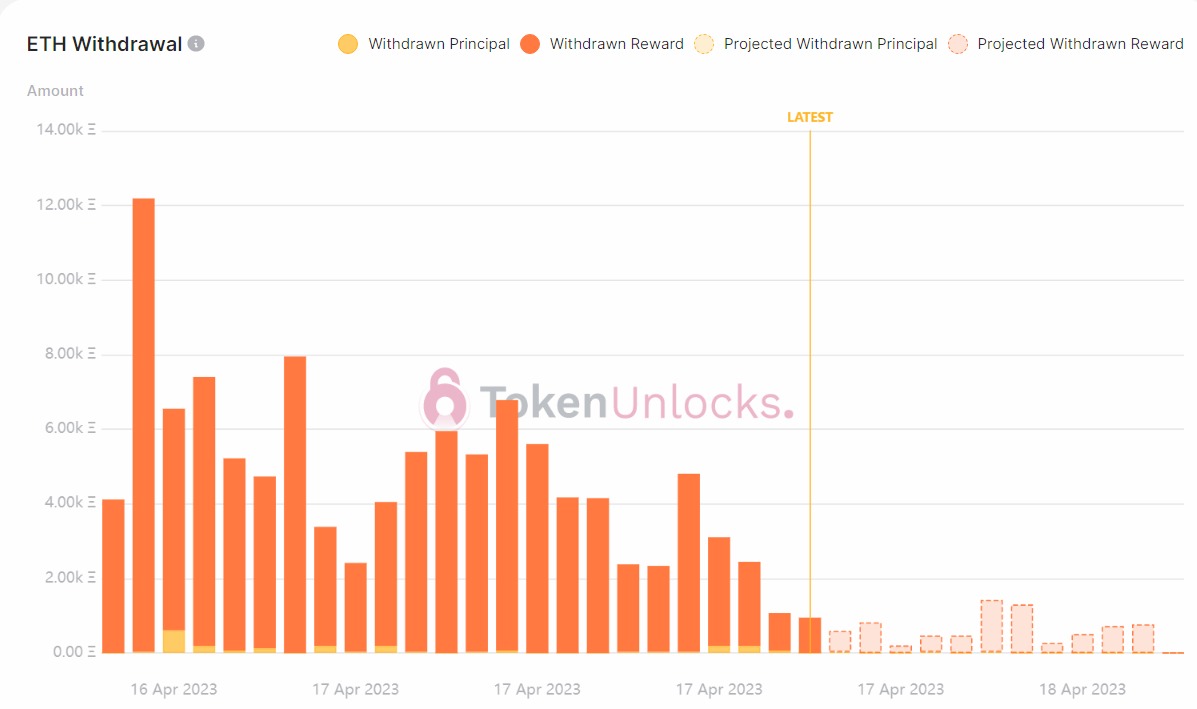Nearly $2 billion worth of the second-largest digital currency by market capitalization, Ethereum ($ETH), are set to be withdrawn from the cryptocurrency’s network, as validators wait for their turn to collect rewards earned securing the network.
Ethereum validators are able to withdraw their tokens after the widely-anticipated Shapella hard fork went live on Ethereum’s network last week. The upgrade implemented Ethereum Improvement Proposal (EIP) 4895, which allows for the withdrawal of staked Ether, which had been locked on the network since the launch of the Beacon Chain.
The upgrade completes Ethereum’s transition to a Proof-of-Stake consensus mechanism and is widely expected to produce short-term price fluctuations as some of the staked Ether is withdrawn. Not all of the 18 million staked ETH will be available for withdrawal all at once due to limits on the amount that can be withdrawn.
With the Shapella upgrade, staked ETH can be withdrawn in two ways: partial and full. Partial withdrawals keep the validators running by automatically distributing the ETH to them, so they have the required 32 ETH balance. Full withdrawals stop the validator and take out the whole staked amount.
According to blockchain data, there are around $1.9 billion worth of ETH that had been staked on the network waiting to be withdrawn, according to data from TokenUnlocks.

Data from the platform reveals that most Ethereum validators are withdrawing rewards they have received as a result of running Validator nodes, rather than withdrawing the principal invested to earn rewards. The number of validators, data shows, fell by around 1,200 since unstaking has become available.
According to data form Nansen, out of all the Ethereum tokens waiting to be withdrawn, around 44% came from stakers who used cryptocurrency exchange Kraken to earn rewards, while 21% come from stakers who use Binance. Out of all the Ethereum that has been withdrawn, roughly 19.5% came from Kraken stakers, while 24.6% came from stakers with liquid staking service LidoDAO.
Image Credit
Featured Image via Unsplash









